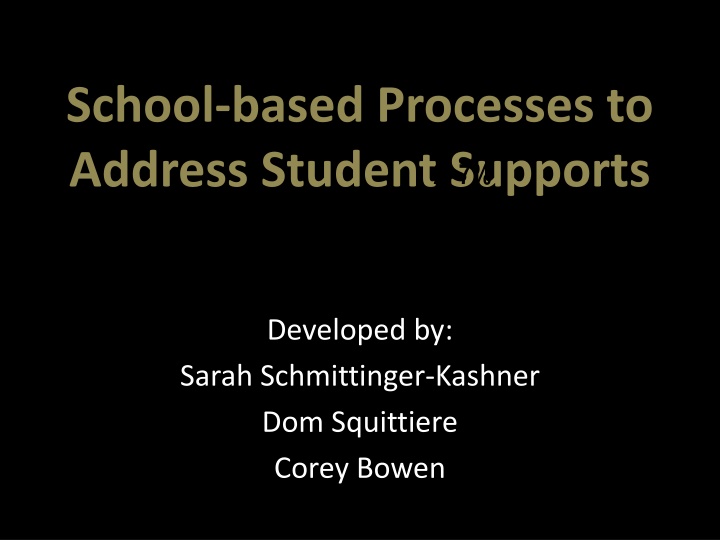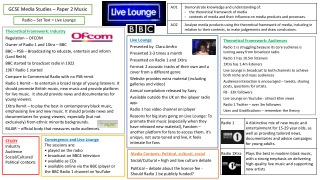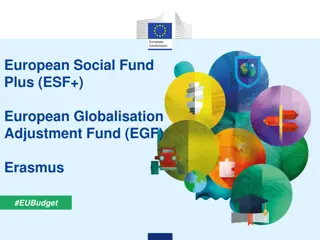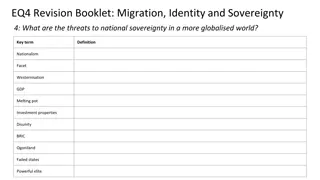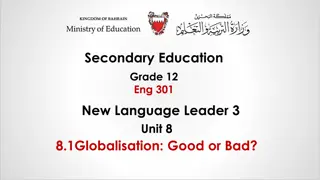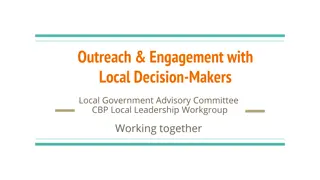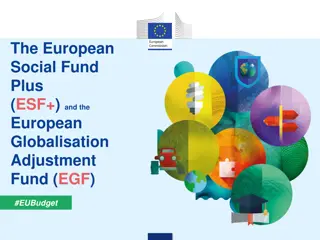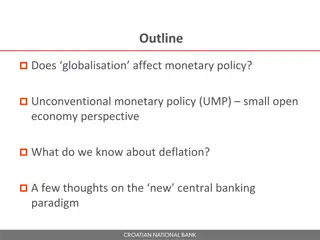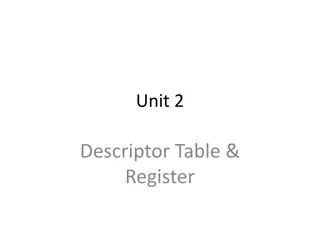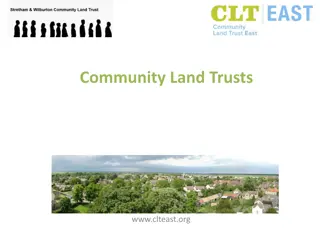Globalisation: Understanding Impact on Local and Global Contexts
Dive into the interconnected world of globalisation, exploring its effects on local economies, cultural exchange, and political structures. Discover how the concept shapes international relations and influences identities. Compare with the concept of localisation to understand the dynamics between global and local spheres. Unveil the key thinkers who have shaped and theorized globalisation and localisation. Engage in interactive activities like brainstorming, defining, and discussing to enhance your grasp of these intricate concepts.
Uploaded on Feb 25, 2025 | 1 Views
Download Presentation

Please find below an Image/Link to download the presentation.
The content on the website is provided AS IS for your information and personal use only. It may not be sold, licensed, or shared on other websites without obtaining consent from the author.If you encounter any issues during the download, it is possible that the publisher has removed the file from their server.
You are allowed to download the files provided on this website for personal or commercial use, subject to the condition that they are used lawfully. All files are the property of their respective owners.
The content on the website is provided AS IS for your information and personal use only. It may not be sold, licensed, or shared on other websites without obtaining consent from the author.
E N D
Presentation Transcript
School-based Processes to Address Student Supports 2 7% 10 20% Developed by: Sarah Schmittinger-Kashner Dom Squittiere Corey Bowen Targeted 80 95% Universal
School-based Processes to Address Student Supports 2 7% Intensive 10 20% Targeted 80 95% Universal
Some Housekeeping. In lieu of answering questions today, please write down your questions on the index cards provided. Before you leave, complete exit ticket.
Physical, medical or psychiatric problems Stresses on or within families History of trauma Inconsistent, inattentive or negative parenting Negative role or peer models The chaos of television and social media Poor diet Irregular sleep Poverty Truancy
o Emotional control and regulation (e.g., coping with moods or frustration; self-calming, assessing the size of a problem) o Attention and concentration o Sustaining effort and waiting for rewards o Negotiating o Compromising and sharing power o Estimating how difficult or long a task will be o Cooperation and staying with the group o Social graces appropriate to school work and community
Cooperation with adults pays off in rewards that aren t very powerful and usually far in the future Misbehavior pays off in rewards that are strong and immediate: Attention from adults or peers Attention that is especially intense and exciting Avoidance of or escape from situations that are boring, strenuous or threatening Mischief; the fun of causing discomfort or disruption Release or discharge of tension, frustration or anger Revenge
The students are old enough to know how to behave. The students should be able to figure out what I want them to do on their own. The students will do it because I said so. I shouldn t have to repeat myself. If they haven t gotten it by now, they re never going to get it.
Relationship between Behavior Support and Content-based Instruction Challenging Behavior in the classroom is influenced by what the student brings with them Alternatives to challenging behavior need to be directly taught in the classroom environment. Unless we teach alternatives to challenging behavior, some students may not be available to receive content based instruction. Therefore behavior support IS instruction
How well we teach = How well they learn How well we teach = How well they act
Three-Tiered Model Intense, Individualized Supports Targeted Behavior Supports Group Systems School-wide Behavior Support Systems Instructional and Environmental Contexts
Tier 1School-wide Behavior Support Proactive Behavior & Academic Supports Team-based Problem Solving Data-based Decisions Expected Behaviors Defined and Taught Reinforcement Strategies Consistent Response to Problem Behaviors Classroom Management Principles Character Education Student Choices and Community Building
Basics of teaching behavioral expectations USE: A research-based procedure for teaching the behaviors. Examples and non-examples from classroom and non- classroom settings. Modeling and role-playing to teach new skills and provide students with practice opportunities. Feedback and acknowledgement to ensure students display the expected/taught behaviors.
Targeted Interventions Tier 2 Group Interventions Check In / Check Out Procedures Mentors (peer and/or adult) Self- Management Strategies Daily schedule/agenda, monitoring form, point card Contracts w/ Instruction and Reinforcement Social Skills Groups
Tier 3 Targeted Interventions Intense, individualized supports
Where do I turn for support for a student? Refer to the building Problem Solving Team Confer with: school psychologist guidance counselor behavioral interventionist Nurse administrative team PLC team
Intervention Evaluation & Recommendations Problem Identification Problem Solving Cycle Intervention Design & Implementation Problem & Data Analysis
Traditional Discipline Positive Behavior Support Call home; parent contact ISS, Suspension, etc. Relies on negative consequences to change behavior Assumes that things like suspension are negative for students May place unwarranted confidence in lecture and discussion to produce behavior change Does not teach or incentivize desirable behaviors Team collaboratively gathers information/data about the behavior problem; functional behavioral assessment (FBA) A Behavior Support Plan (BSP) is developed , based on the FBA findings All adults with responsibility for the student, know and do their best to follow the plan Assumes behavior is learned and is usually changeable Adapts environments/routines Teaches positive expectations Uses reinforcement to incentivize behavior change o o o o o
To explain why a behavior occurs in terms of its relation to other observable events (Setting Events, Antecedents, Behavior Consequence ) Caution: Speculating simplistically about the causes of behavior may inhibit the FBA process. For example Inner thought process of the individual Inner emotional distress or dysfunction Poverty Personality Genetics These ARE real things with real effects. But the FBA process requires us to focus on the causes we may be able to control, and it connects us with tools that are powerful.
Setting Events (slow triggers): Background factors that influence behavior. Often beyond our control. Illness or fatigue Problems at home Attention deficits Antecedents (fast triggers): Events in the immediate context that happen prior to the behavior Work demands Corrective feedback Negative peer interaction Behavior: The things a person does or says Consequences: Events that occur following the behavior (often, changes in the behavior of others) that serve as payoffs for the student Peer or adult attention Avoidance of less preferred settings, people or activities
Doing an FBA and developing a BSP is a team process that takes some time One team member takes the lead (often, the school psychologist) Teachers are critical team members, because o YOU are key informants in terms of the function of the behavior. o YOU are key data takers. o YOU come to the table with insight about what might work and what probably won t. o YOUR input about the practicality (do-ability) of the plan is critical
Preliminary conversations/conferences, including teachers or others reporting the problem; review of RAP data, etc. Define behaviors of concern in observable, measurable terms (if I were in the room when it was happening, what would I see?) Establishment of a data system to capture the behavior of concern
Steps in the FBA/BSP Process: FBA Data Gathering Indirect observation methods Checklists and questionnaires filled out by staff who know the student best or encounter the behavior most 1:1 Interviews or structured, group discussions to garner staff and family members impressions and opinions Direct observation methods In vivo (live time) data recorded by a teacher or another observer of the behavior Observation by an uninvolved observer
The FBA is a report summarizing the students needs and motives. The BSP is a script to guide adult behavior.
Describe the challenging behaviors using specific language (so all adults and the student are focused on the same things) Guide the behavior of adults around the following: Adapting instruction, school routines or interaction to make the challenging behaviors less likely to occur Teaching alternative, more desirable behaviors in place of the challenging behaviors Incentivizing behavior change by providing reinforcement for desirable behaviors Responding to the challenging behaviors, if and when they occur Taking data, so the plan can be objectively evaluated
Problem Behaviors reported and problem identification Evaluate, Plan & Revise, as needed FBA/BSP Process Develop/ Implement support plan, BSP FBA including Data Analysis
1- What building do you work in? 2- What information about today s presentation was of most value to you? 3- What topic would you like more training or information about? 4- Other questions on this topic?
